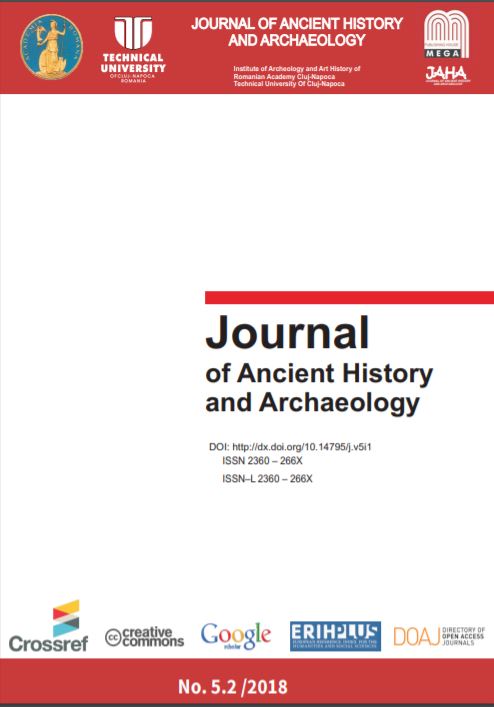NOTES ON THE USE, DATING AND ORIGIN OF THE BUCKET-SHAPED PENDANTS FROM THE SARMATIAN ENVIRONMENT OF THE GREAT HUNGARIAN PLAIN
NOTES ON THE USE, DATING AND ORIGIN OF THE BUCKET-SHAPED PENDANTS FROM THE SARMATIAN ENVIRONMENT OF THE GREAT HUNGARIAN PLAIN
Author(s): Vitalie BârcăSubject(s): History
Published by: Editura Mega Print SRL
Keywords: bucket-shaped pendants; graves; the Sarmatians; the north and north-west Pontic area; the Great Hungarian Plain; the Germans; Przeworsk the Barbaricum;
Summary/Abstract: Bucket-shaped pendants were widely spread in various cultural environments from the Roman imperial period, in the area comprised between the north of the Black Sea and Central Europe. This study, without aiming to be exhaustive, attempts to examine pieces of the type found in the Sarmatian environment of the Great Hungarian Plain starting from the iron bucket-shaped pendants discovered in graves 9 and 13 from the cemetery at Hunedoara Timișană, Șagu commune, Arad county.Grave 9 from Hunedoara Timișană, correlated with the remaining grave goods, dates sometime to the chronological time frame comprised between the end of the 2nd century AD and first half of the 3rd century AD, while grave 13, dates sometime to the time span between the end of the 2nd century AD and the third quarter of the 3rd century AD.The author examines the pendants from Hunedoara Timișană beside the other found in the burial features of the Great Hungarian Plain, but also in other cultural environments, in a broader context and notes that in the Sarmatian environment of the Great Hungarian Plain bucket-shaped pendants come mainly from female and infant graves, being found in both richly and poorly furnished graves.Subsequent to the examination of bucket-shaped pendant finds in the Sarmatian environment of the Great Hungarian Plain, it was noted that although they cover the entire geographical area, one may not speak of an intensive use by the Sarmatians, like the case of other pendant types. Also, it was noted that these pendants were used by the Sarmatians from the Great Hungarian Plain, to a larger or smaller extent, over the entire duration of the chronological interval comprised between the end of the 1st century AD and the end of the 4th – early 5th century AD.Last but not least, the author observes that earliest specimens come from the north-Pontic area and originate in features dating to the 2nd – 1st century BC, which suggests that these pendants originated, beside other types of pendants, in the north-Pontic region. In the 1st century BC, such pendants were present with the late Scythians and the Sarmatians from the north and north-west of the Black Sea, but also in the Geto-Dacian and Germanic environments (Poieneşti-Lucășeuca culture). Once with the 1st century AD, bucket-shaped pendants are present in several cultural milieus, the Sarmatian from the Great Hungarian Plain included, where the custom of wearing these pendants was brought in the second half of the 1st century AD by the first groups of Sarmatians that settled the region.In the end, it is concluded that the massive use of the bucket-shaped pendants over the 2nd – 4th century AD in various cultural environments from the area comprised between the north of the Black Sea and Central Europe evidences they became “supranational” artefacts, being produced and used by various populations from this geographical area.
Journal: Journal of Ancient History and Archaeology
- Issue Year: 5/2018
- Issue No: 2
- Page Range: 37-63
- Page Count: 27
- Language: English

